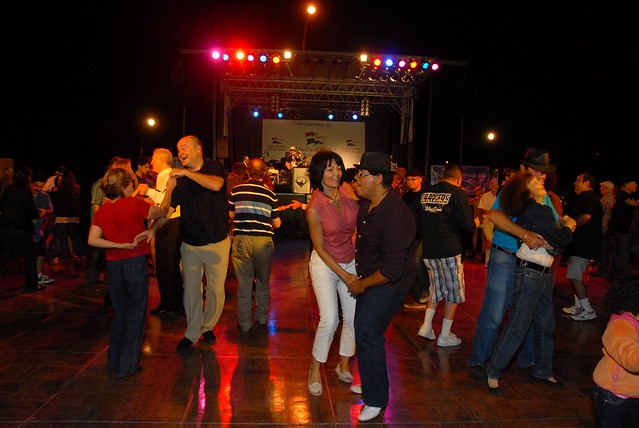 |
| Young couple dancing the cha-cha-cha at a junior Latin dance competition (Photo credit: Wikipedia) |
Emmitt Smith of Dallas Cowboys fame and former Superbowl Champion waltzed away Wednesday night with another winning trophy to place on his mantle, this one the championship Mirror Ball Trophy from ABC's "Dancing with the Stars".
I am so proud of this man for shattering all the stereotypes, and offering a resounding response once and for all to the age-old question: what type of man learns ballroom dancing? The answer....a REAL man!
There can surely be no question as to this man's virility, nor his confidence in himself. Not only did he plunge wholeheartedly into unfamiliar waters, but he chose to do it on nationwide television, in front of millions of viewers. How many men (or women, for that matter) have the guts to do that?
I've heard all the whiny excuses for not taking ballroom dancing lessons...I've got two left feet....dancing is for sissies... I don't have time to learn something new....what good does it do to know how to dance, I'll never compete...I'll look stupid....I'm no good at it...I don't like it....it's too expensive...and on and on "ad nauseum". It doesn't matter the words they choose, they're all saying basically the same thing..."I lack confidence in myself and I'm scared". How terribly, pathetically sad.
Knowing what I know about ballroom dancing, there simply is no excuse for not learning. I've seen men without legs on the ballroom dance floor. I've watched macho types, geeky types, and overweight men move with grace as they executed a beautiful promenade. I've known men who took on odd jobs to pay for continued lessons. I've witnessed men literally dragged into the studio against their will and watched with pride as they developed into, not just great dancers, but one even went on to become a phenomenal instructor. How much they all would have missed if they had let their fears keep them from trying.
There are many things in this world to be afraid of. Ballroom dancing isn't one of them. Don't be afraid to open yourself to new possibilities. The numerous benefits you'll receive may shock you.







